Hisense Microwave Oven

PRECAUTIONS TO AVOID POSSIBLE EXPOSURE TO EXCESSIVE MICROWAVE ENERGY
- Do not attempt to operate this oven with the door open since open-door operation can result in harmful exposure to microwave energy.It is important not to defeat or tamper with the safety interlocks.
- Do not place any object between the oven front face and the door or allow soil or cleaner residue to accumulate on sealing surfaces.
- Do not operate the oven if it is damaged. It is particularly important that the oven door close properly and that there is no damage to the:(1) DOOR (bent)(2) HINGES AND LATCHES (broken or loosened)(3) DOOR SEALS AND SEALING SURFACES
- The oven should not be adjusted or repaired by anyone except properly qualified service personnel.
Specifications
Model: HCMH159ATRated Voltage: 120V~ 60HzRated Input Power(Microwave): 1500WRated Output Power(Microwave): 900WRated Input Power(Convection): 1450WOven Capacity: 1.5 Cu.ft.{42 L)Turntable Diameter: 013.6 inch(345 mm)External Dimensions: 29.9(W) X 16.4(H) X 15(0) inchNet Weight: Approx. 64 Lbs(29 kg)
IMPORTANT SAFETY INSTRUCTIONS
Warning: To reduce the risk of bums, electric shock, fire, injury to persons or exposure to excessive microwave oven energy when using your appliance, follow basic safety precautions, including the following:
- Read all instructions before using the appliance.
- Read and follow the specific: “PRECAUTIONS TO AVOID POSSIBLE EXPOSURE TO EXCESSIVE MICROWAVE ENERGY” found on page 2.
- As with most cooking appliances, close supervision is necessary to reduce the risk of a fire in the oven cavity.
- To reduce the risk of fire in the oven cavity :i). Do not overcook food. Carefully attend the appliance when paper, plastic, or other combustible materials are placed inside the oven to facilitate cooking.ii).Remove wire twist-ties and metal handles from paper or plastic containers/bags before placing them in the oven.iii). If materials inside the oven ignite, keep the oven door closed. Turn the oven off, and unplug the appliance. Disconnect the power cord, shut off power at the fuse or circuit breaker panel. iv). Do not use the oven cavity for storage purposes. Do not leave paper products, cooking utensils, or food in the cavity when not in use.
- This oven must be grounded. Connect only to properly grounded outlet. See “GROUNDING INSTRUCTIONS” found on page 4.
- Install or locate this oven only in accordance with the installation instructions provided.
- Some products such as whole eggs and sealed containers-for example, closed glass jars-are able to explode and should not be heated in the oven.
- Use this appliance only for its intended uses as described in this manual. Do not use corrosive chemicals or vapors in this appliance. This oven is specifically designed to heat or cook or dry food. It is not designed for industrial or laboratory use.
- As with any appliance, close supervision is necessary when used by children.
- Do not operate this oven if it has a damaged cord or plug, if it is not working properly or if it has been damaged or dropped.
- This appliance should be serviced only by qualified service technicians. Contact the nearest authorized service facility for examination, repair or adjustment.
- Do not cover or block any openings on the oven.
- Do not store or use this appliance outdoors.
- Do not use this oven near water, for example, near a kitchen sink, in a wet basement, near a swimming pool, or similar locations.
- Do not immerse cord or plug in water.
- Keep cord away from heated surfaces.
- Do not let cord hang over edge of table or counter.
- When cleaning surfaces of door and oven that comes together on closing the door, use only mild, nonabrasive soaps or detergents applied with a sponge or soft cloth.
- Liquids, such as water, coffee, or tea are able to be overheated beyond the boiling point without appearing to be boiling. Visible bubbling or boiling when the container is removed from the microwave oven is not always present. THIS COULD RESULT IN VERY HOT LIQUIDS SUDDENLY BOILING OVER WHEN THE CONTAINER IS DISTURBED OR A SPOON OR OTHER UTENSIL IS INSERTED INTO THE LIQUID.i) Do not overheat the liquid.ii) Stir the liquid both before and halfway through heating it.iii) Do not use straight-sided containers with narrow necks.iv) After heating, allow the container to stand in the microwave oven for a short time before removing the container.v) Use extreme care when inserting a spoon or other utensil into the container.
- Do not mount over sink.
- Do not store anything directly on top of the appliance surface when the appliance is in operation.
SAVE THESE INSTRUCTIONS GROUNDING INSTRUCTIONS
DANGERElectric Shock Hazard Touching some of the internal components can cause serious personal injury or death. Do not disassemble this appliance.WARNINGElectric Shock Hazard Improper use of the grounding can result in electric shock. Do not plug into an outlet until appliance is property installed and grounded.
This appliance must be grounded. In the event of an electrical short circuit, grounding reduces the risk of electric shock by providing an escape wire for the electric current. This appliance is equipped with a cord having grounding wire with a grounding plug.The plug must be plugged into an outlet that is properly installed and grounded.Consult a qualified electrician or serviceman if the grounding instructions are not completely understood or if doubt exists as to whether the appliance is properly grounded. If it is necessary to use an extension cord, use only a 3-wire extension cord that has a 3-pronged grounding plug, and a 3-slot receptacle that will accept the plug on the appliance. The marked rating of the extension cord shall be equal to or greater than the electrical rating of the appliance.
Radio Interference
* Only use a dedicated circuit for this appliance.Other products should not be plugged into the same circuit during operation.
- Operation of the microwave oven may cause interference to your radio, TV or similar equipment.
- When there is interference, it may be reduced or eliminated by taking the following measures:1) Clean door and sealing surface of the oven2) Reorient the receiving antenna of radio or television.3) Relocate the receiver with respect to the microwave oven.4) Move the microwave oven away from the receiver.
UTENSILS
CAUTIONPersonal Injury HazardTightly-closed utensils could explode. Closed containers should be opened and plastic pouches should be pierced before cooking.
See the instructions on “Materials you can use in microwave oven or to be avoided in microwave oven.” There may be certain non-metallic utensils that are not safe to use for microwaving. If in doubt, you can test the utensil in question following the procedure below.Utensil Test:
- Fill a microwave-safe container with 1 cup of cold water (250ml) along with the utensil in question.
- Cook on maximum power for 1 minute.
- Carefully feel the utensil. If the empty utensil is warm, do not use it for microwave cooking.
- Do not exceed 1 minute cooking time.
OPERATING INSTRUCTIONS
FEATURES OF YOUR MICROWAVE
Front view

- Window
- Interlock System
- Door Assembly
- Turntable Ring Assembly
- Turntable Shaft
- Turntable Glass Tray
- Control Panel
- Ventilation openings(on top)
- Wire rack(use in convection and combination cooking on the removable turntable)
- Shelf(use in microwave cooking)
BOTTOM VIEW 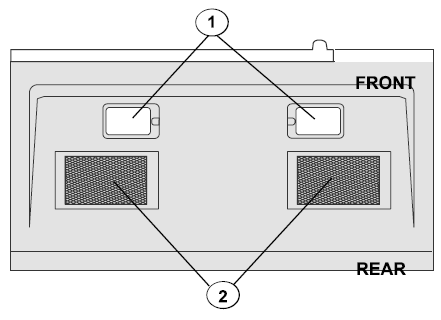
- Surface Lights
- Ventilation Filters
CONTROLS
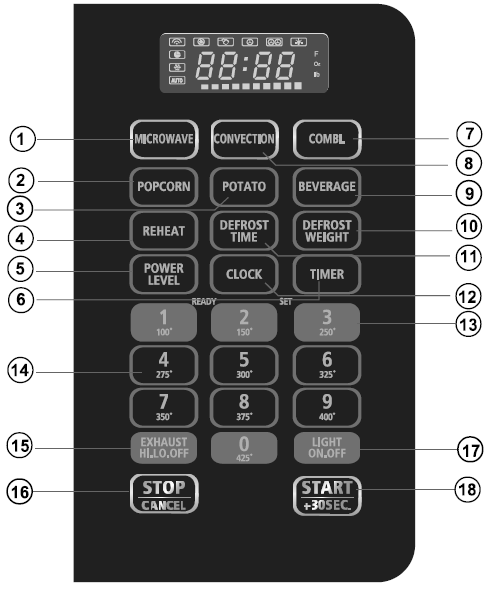
- Microwave
- Popcorn
- Potato(1-4 potatoes)
- Reheat
- Power Level
- Timer
- Combination
- Convection
- Beverage
- Defrost weight
- Defrost Time
- Clock
- Easyset
- Number pads
- Exhaust(High/Low/Off)
- Stop/Cancel
- Light ON.OFF
- START/+30 sec
Setting the clockExample: setting clock display for 9:00:
- Touch Clock pad once for AM, touch twice for PM.
- Enter time using number pads.
- Touch Clock pad again.
Setting the timerExample: setting timer for 5 minutes:
- Touch Timer pad once.
- Enter desired time using number pads.
- Touch Timerpad.
When the timer has reached the end of set time, you will hear beep alerts indicating the timer has run out.
Control Lock
You may lock the control panel to prevent the microwave from being accidentally started or used by children.The control lock feature is very useful when cleaning the control panel. The lock will prevent accidental programming when wiping the control panel clean.Example: to set the control lock ON:Touch and hold the Stop/Cancel pad for more than 3 seconds. The Lock icon will appear in the display window along with 2 beeps.Example: to change the control lock from ON to OFF:Touch and hold the Stop/Cancel pad for more than 3 seconds. The Lock icon will disappear in the display window.
Using the Stop/Cancel keyThis feature will let you quickly stop or cancel the cooking process.Touch the Stop/cancel pad to:
- Erase if you have entered wrong information.
- Cancel timer.
- Press pad once to pause the oven temporally during cooking.(Touch START/ +30 sec pad again to resume cooking.)
- Return the time of day (clock) to the display after cooking cycle is completed.
- Cancel a program during cooking, touch twice.
Using the Start/+ 30 sec. keyThis feature will let you quickly start or add 30 secondsTouch the START/+30sec. pad to:
- Start programmed cooking.
- Start cooking for 30 seconds at 100% power level.
- Extend cooking time in multiples of 30 seconds each time this pad is touched during microwave cooking.
Example: to add 1 minute of cook time during 80% microwave cookingPress START/+30 sec pad twice.Note: During multiple stages cooking, defrosting or auto menu cooking , cooking time cannot be increased by pressing START/+30 sec.
Suggested power levels for cookingThe 10 power levels available with this microwave will help you to adjust to the power output best suited for the food type you are preparing. As with any food prepartion in the microwave, it is best to follow the microwave instructions that are printed on food packaging.The table below provides suggested power levels for various types of food that you can be prepare in the microwave.
| Power level | Microwave output | Use to prepare when: |
| 10 | 100 % | • Boiling water. |
| High | • Cooking ground beef.
• Making candy. • Cooking fresh fruits & vegetables • Cooking fish & poultry . |
|
| • Preheating browning dish.
• Reheating beverages. |
||
| • Cooking bacon slices. | ||
| 9 | 90 % | • Reheating meat slices quickly.
• Saute onions, celery & green peppers . |
| 8 | 80 % | • All reheating.
• Cooking scrambled eggs. |
| 7 | 70 % | • Cooking breads & cereal products .
• Cooking cheese dishes & veal. • Cakes, muffins, brownies & cupca kes. |
| 6 | 60 % | • Cooking pasta. |
| 5 | 50 % | • Cooking meats & whole poultry.
• Cooking custard. • Cooking spare ribs, rib roast & sirloin roast. |
| 4 | 40 % | • Cooking less tender cuts of meat.
• Reheating frozen packaged foods. |
| 3 | 30 % | • Thawing meat, poultry & seafood.
• Cooking small quantities of food. • Finish cooking casseroles, stew & some sauces. |
|
2 |
20 % | • Softening butter & cream cheese.
• Heating small amounts of food. |
| 10 % | • Softening ice cream.
• Raise yeast dough. |
Heating with multiple cooking stages
For best results, some microwave recipes call for different power levels or different lengths of time for cooking. Your microwave may be set to change from one stage to another automatically (2 stages maximum).Example: to cook food for 3 minutes at 80% power and then 50% power for 6 minutes 30 seconds:
- Press Microwave
- Use the number pads to enter heating time for the 1st stage (cook time may be set up to 99 minutes and 99 seconds).
- Press Power Level pad once.
- Use the number keys to enter power level for the 1st stage. PL8 appears in the display (80 % power).
- Press Microwave pad for 2nd stage.
- Use the number pads to enter heating time for the 2nd stage (cook time may be set up to 99 minutes and 99 seconds).
- Press Power Level pad for 2nd stage.
- Use the number key to enter power level for the 2nd stage. PL5 appears in the display (50 % power).
- Press Start/+30SEC. pad.
When heating has finished you will hear beeps .
Suggestions for getting the best results
To help you achieve the best possible results from your microwave oven, read the following suggestions below;
- Storage temperatureFoods taken from the freezer or refrigerator take longer to cook than the same foods would at room temperature.
- SizeSmall pieces of food cook faster than large ones. Pieces similar in size and shape will cook more evenly when cooked together. For more even results, reduce the power levels when cooking large pieces of food.
- Natural moistureVery moist foods cook more evenly because microwave energy heats water molecules very efficiently.
- StirringStir foods such as casseroles and vegetable from the outside to the center to distribute the heat more evenly. This will allow the food to cook faster. Constant stirring is not necessary.
- Turn over itemsTurn over foods such as pork chops, roasts or whole cauliflower halfway through the cook time. This will help to expose all sides equally to microwave energy.
- Food placementPlace delicate areas of food items, such as asparagus tips, toward the center of the turntable tray.
- Food arrangementArrange unevenly shaped foods, such as chicken pieces or salmon, with the thicker or meatier parts toward the outside of the turntable tray.
- Let the food standAfter removing the food from the microwave, cover the food with foil or a casserole lid and let it stand to finish cooking. This will help the food finish in the center and avoids overcooking the out edges, The length of stand time depends on the density and surface area of the food items.
- Wrapping in paper towels or waxed paper Sandwiches and many other food types containing prebaked bread should be wrapped prior to placing in the microwave to help prevent the food items fro drying out while heating.
Setting Defrost by Weight
Example: to defrost 1 lb. of food with the default power level and cook time determined automatically:
- Press Defrost Weight pad once. 0.0 will appear in the display.
- Use the numeric pads to input weight of food to defrost in pounds (10 = 1 lb.) You may enter any weight from 0.1 to 6.0lbs.
- Press START/+30sec. pad.
When defrosting has finished you will hear beeps .Note: The weight amount must be a valid entry for this feature to start. A valid weight entry is 0.1 to 6.0 pounds.
Setting Defrost by Time
Example: to defrost food with the default 30% power level for 5 minutes:
- Press Defrost Time pad once. 0:00 will appear in the display.
- Use the number pads to enter desired defrost time (defrost time may be set up to 99 minutes and 99 seconds).
- Press Start/+30SEC. pad.
When heating has finished you will hear beeps.Note: Power levels cannot be changed for both defrost (by weight) or defrost (by time) because the defrost performance will be adversely affected.
Special notes for defrosting by time
- After pressing Start/+30SEC. key, the display will count down remaining defrost time. The oven will beep twice during the defrost cycle. At this time open the door and turn the food if needed and remove any portions that have already thawed. Touch the Start/+30SEC. key to resume the defrost cycle.
- When heating has finished you will hear beeps.
Reheat
The reheat feature provides 3 quick preset settings based on serving size to reheat food for your cooking convenience.Example: to reheat 24 ounces of food.
- Press Reheat pad 3 times to reheat 24oz. of food. 24.00oz will appear in the display (see reheat category table).
- Press Start/+30SEC. pad.
| Reheat Category | Press | Display |
| 8 ounces of food | once | 8.00 oz |
| 16 ounces of food | twice | 16.00 oz |
| 24 ounces of food | 3 times | 24.00 oz |
Reheat cooking suggestions
| Reheat | Directions | Amount |
| Dinner plate | Use only pre-cooked, refrigerated foods. Cover plate with vented plastic wrap or waxed paper, tucked under plate. lffood is not as hot as you prefer after heating with Reheat, continue heating using manual time and power level settings.
Contents: • 3-4 oz. meat, poultry or fish (up to 6 oz. with bone) • ½ cup starch (potatoes, pasta, rice, etc.) •½cup of vegetables (about 3-4 oz.) |
1 serving
(1 plate) |
| Casserole | Cover plate with lid or vented plastic wrap. If food is not as hot as you prefer after heating with Reheat, continue heating using manual time and power level settings.
Stirfoods once before serving.
Contents: • Casserole-refrigeratedfoods (for example beef stew or lasagna) • Pasta-Canned spaghetti and ravioli, refrigerated foods. |
1 to 4 servings |
| Pasta |
CONVECTION Cooking
There are ten temperatures of convection:100° F, 15()0F, 250° F, 2759=,30D°F,325°F,350° F,375°F, 400°F,425°F.Convection cooking uses a heating element to raise the temperature of the air inside the oven. Any oven temperature from 100°F to 425°F may be set. A fan gently circulates this heated air throughout the oven, over and around the food, producing golden brown exteriors and rich, moist interiors.Because the heated air is kept constantly moving, not permitting a layer of cooler air to develop around the food, some foods cook faster than in regular oven cooking.For Best Results …Always use the shelf when convection cooking.Reduce package/recipe temperature 25°F for baked goods. The shelf is required for good air circulation and even browning.See the Cookware Tips section (P20) for information on suggested cookware.Using CONVECTION With preheatingExample: to cook food for 5 minutes at 2 50° F using Convection with preheating
- Press Convection pad once.
- Press the temperature key to select the temperature you need. Do not enter cook time now. (The cook time will be entered later, after the oven is preheated.)
- Press Start/+30SEC.pad to start preheating. ( When the oven is preheated, it will signal.)
- Place the food in the oven. Press the number keys to set cooking time.
- press” Start/+30SEC. ” to start cooking. When cooking is complete, the oven will signal and tum off.
Using CONVECTION Without preheatingExample: to cook food for 5 minutes at 2 50° F using Convection without preheating
- If your recipe does not require preheating, press the Convection pad once.
- Press the temperature key to select the temperature you need.
- Press Convection to confirm the temperature.
- Press the number keys to set cooking time.
- Press the ” Start/+30SEC. “pad to start the oven.
Combination CookingCombination Cooking offers the best features of microwave energy and convection cooking. Microwaves cook food fast and convection circulation of heated air browns foods beautifully. Any oven temperature from 100 °F to 425°F may be set.
For Best Results …Always use the shelf when combination cooking.The shelf is required for good air circulation and even browning.See the Cookware Tips section (P19) for information on suggested cookware.
Microwave +convection Combination CookingExample: to cook food for 5 minutes using combination cooking.
- Press COMBI. pad once.
- Press the number keys to set cooking time.
- Press Start/+30SEC. pad to start cooking.
Notes:
- Check the Cookware Tips section for correct cookware when Combination Cooking
- Do not use metal cookware when Combination Cooking
- Place meat on a trivet in a glass dish to collect juices and prevent spattering.
- For best roasting and browning results, whole roasts should be cooked in a glass dish placed directly on the oven shelf.
- For foods that are too tall to fit in the oven, you can leave out the trivet. If necessary, you may take out the shelf and place the dish directly on the turntable.
Popcorn
DO NOT leave micowave oven unattended while popping corn.
The popcorn feature lets you pop 3 different commercially packaged microwave popcorn sized bags. Use the table below to determine the setting to use.
| Amount | Press popcorn pad |
| 1.75 oz. (default setting) | once |
| 3.00 oz. | 2times |
| 3.50 oz. | 3times |
Example: to pop a 3.0 oz. bag of popcorn automatically.
- Press Popcorn pad (1, 2 or 3 times – refer to table above to change for bag size).
- Press Start/+30SEC. pad.The microwave will beep when finished.
PotatoThe potato feature cooks 1, 2,3 or 4 (cooking times based on 8 to 32 oz.) potatoes automatically. Use the table below to determine the setting to use.
| Amount | Press potato pad |
| 1 potato (default setting) | once |
| 2 potatoes | 2times |
| 3 potatoes | 3times |
| 4 potatoes | 4times |
- Press Potato pad (1, 2,3 or 4 times – refer to table above to change quantity).
- Press Start/+30SEC. pad.
Beverage
The beverage feature heats 1, 2 or 3 cups of beverage. Use the table below to determine the setting to use.
| Amount | Press beverage pad |
| 1 cup ( about 8 oz.) | once (default setting) |
| 2 cups (about 16 oz.) | 2 times |
| 3 cups (about 24 oz.) | 3 times |
Example: to heat 1 cup of a beverage .
- Press Beverage pad ( 1, 2 or 3 times -refer to table above to change number of servings).
- Press Start/+30SEC. pad.
The microwave will beep when finished.
Convenience cooking suggestions
| Convenience category | Amount | Suggestions |
| Popcorn | 1.75,3.0,
3.5 oz. 1 pkg. |
Cook a single “microwave-only” bag of popcorn at a time. Use caution when removing and opening the hot popcorn bag from the oven. Let microwave oven cool down at least 5 minutes before using again . |
| Potato | 1,2,3,4
potatoes 8,16,24 32 oz. |
Pierce each potato several times using a fork. Place on turntable in spoke-like fashion. After cooking, let stand for 3-5 minutes. Let oven cool for at least 5 minutes before using again. Use the start/+30sec pad to increase cook time for larger potatoes. |
| Beverage | 1,2,3
cups (8 oz,16 oz, 24 oz.) |
Use a microwave-safe measuring cup or mug; do not cover. Place the beverage in the microwave. After heating, stir well. Let oven cool for at least 5 minutes before using again . Beverages heated with the beverage category may be very hot.
Remove the container with care. |
CLEANING AND CARE
Disconnect the power cord before cleaning or leave the door open to deactivate the oven during cleaning.
Cleaning the exhaust filters
The oven ventilation exhaust filters should be removed and cleaned often; generally at least once every month.
CAUTIONTo avoid risk of personal injury or property damage, do not operate oven hood without filters properly in place.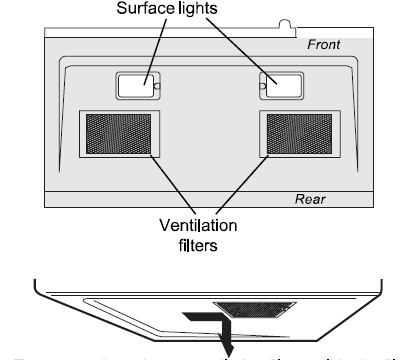
- To remove the exhaust ventilation filters, slide the filter to the rear. Then pull filter downward and push to the other side. The filter will drop out. Repeat for the 2nd filter.

- Soak the ventilation filters in hot water using a mild detergent. Rinse well and shake to dry or wash in a dishwasher. Do not use ammonia. The aluminum on the filter will corrode and darken.

- To reinstall the exhaust ventilation filter, slide it into the side slot, then push up and toward oven to lock. Reinstall the 2nd filter using the same procedure.
Surface light replacement
CAUTION: To avoid risk of personal injury or property damage, wear gloves when replacing the light bulbs.
- Unplug the microwave oven or turn off power at the main circuit breaker.
- Remove the bulb cover mounting screws at both light positions under the microwave.

- Replace bulb with 30 watt appliance bulb.
- Re-install bulb cover and mounting screw.
- Plug the microwave back into the power supply or turn the power back on at the main circuit breaker.
Disconnect the power cord before cleaning or leave the door open to deactivate the oven during cleaning.
Charcoal filter replacement
Charcoal Filter installed in your microwave oven, is used for nonvented, recirculated installation. The filter should be changed every 6 to 12 months depending on use.
- Disconnect power to the microwave oven at the circuit breaker panel or by unplugging.
- Remove the vent grill mounting screws.
- Pull the vent grill away from the unit.

- Remove the charcoal filter by pushing it inwards, then turn and pull it away from the unit.

Oven light replacement
Remove the vent grill per instructions 1-4 above and charcoal filter, if used.
- Open light cover located behind filter mounting by carefully pulling up on the front edge.

- Remove old light bulb and replace only with equivalent 30 watt bulb available from parts distributor. Bulbs are also available at most hardware stores or lighting centers.
 Note: DO NOT USE BULB LARGER THAN 30WATTS.
Note: DO NOT USE BULB LARGER THAN 30WATTS. - Replace the microwave oven light cover by carefully pushing into place. Replace the charcoal filter. Push the vent grill back into place (engaging both the bottom and top tabs) and replace the vent grill mouting screws.
Cleaning suggestions
For best performance and for safety reasons, keep the oven clean inside and outside. Take special care to keep the inner door panel and oven fron frame free of food and grease build-up.Never use rough scouring powder or pads on the microwave. Wipe the microwave oven inside and out with a soft cloth and and warm (not hot) mild detergent solution. Then rinse and wipe completely dry.Wipe spatters immediately with a wet paper towel, especially after cooking greasy foods like chicken or bacon.Clean your microwave oven weekly or more often, if needed.Follow these instructions to clean and care for your microwave oven:
- Keep the inside (cavity) of the oven clean. Food particles and spilled liquids can stick to the oven walls, causing the oven to work less efficiently.
- Wipe up spills immediately. Use a damp, clean cloth and mild soap. DO NOT use harsh detergents or abrasive cleaners.
- To help loosen baked-on food particles or liquids, heat 2 cups of water (add the juice of 1 lemon if you desire to keep the oven fresh smelling) in a 4 cup measuring glass at High power for 5 minutes or until boiling. Let stand in oven cavity for 1 or 2 minutes.
- Remove the glass turntable tray from the oven when cleaning the oven cavity or tray. To prevent the glass turntable from breaking, handle with care and do not put it in water immediately after cooking. Wash the turntable tray in warm sudsy water or in the dishwasher.
- Clean the outside surface of the microwave with soap and a clean damp cloth. Dry with a clean soft cloth. To prevent damage to the operating parts of the oven, do not let water seep into any vents or openings.
- Wash the oven door window with very mild soap and water. Be sure to use a soft clean cloth to avoid scratching.
- If steam accumulates inside or outside the oven door, wipe with a soft cloth. Steam can accumulate when operating the oven in high humidity and in no way indicates microwave leakage.
- Never operate the oven without food in the oven cavity; this can damage the magnetron tube or glass tray. You may wish to leave a cup of water standing inside the oven when it is not in use to prevent damage if the oven is accidentally turned on.
How to Clean the InsideWalls.Floor, Inside Widow, Metal and Plastic Patrs on the Door.Some spatters can be removed with a paper towel, others may require a damp doth. Remove greasy spatters with a sudsy cloth, then rinse with a damp cloth. Do not use abrasive cleaners or sharp utensils on oven walls.To clean the surface of the door and the surface of the oven that come together upon closing, use only mild, non-abrasive soaps or detergents using a sponge or soft cloth. Rinse with a damp cloth and dry. Never use a commercial oven cleaner on any part of your microwave.Removable Turntable and Turntable SupportTo prevent breakage, do not place the turntable into water just after cooking. Wash it carefully in warm, sudsy water or in the dishwasher. The turntable and support can be broken if dropped. Remember, do not operate the oven without the turntable and support in place.
How to Clean the OutsideDo not use cleaners containing ammonia or alcohol on the microwave oven. Ammonia or alcohol can damage the appearance of the microwave.
Maintenance
Troubleshooting
Check your problem by using the chart below and try the solutions for each problem. If the microwave oven still does not work properly, contact the nearest authorized service center.
| TROUBLE | POSSIBLE CAUSE | POSSIBLE REMEDY |
| Oven will not start | a. Electrical cord for oven is not plugged in.
b. Door is open. c. Wrong operation is set. |
a. Plug into the outlet.
b. Close the door and try again. c. Check instructions. |
| Arcing or sparking | a. Materials to be avoided in microwave oven were used .
b. The oven is operated when empty. c. Spilled food remains in the cavity. |
a. Use microwave-safe cookware only.
b. Do not operate with oven empty. c. Clean cavity with wet towel. |
| Unevenly cooked | a. Materials to be avoided in microwave oven were used.
b. Food is not defrosted completely. c. Cooking time, power level is not suitble. d. Food is not turned or stirred. |
a. Use microwave-safe cookware only.
b. Completely defrost food. |
| foods | c. Use correct cooking time, power level.
d. Turn or stir food. |
|
| Overcooked foods | Cooking time, power level is not suitable. | Use correct cooking time, power level. |
| Undercooked foods | a. Materials to be avoided in microwave oven were used.
b. Food is not defrosted completely. c. Oven ventilation ports are restricted. d. Cooking time, power level is not suitable. |
a. Use microwave-safe cookware only.
b. Completely defrost food. c. Check to see that oven venti- lation ports are not restricted. d. Use correct cooking time, power level. |
| Improper defrosting | a. Materials to be avoided in microwave oven were used.
b. Cooking time, power level is not suitable. c. Food is not turned or stirred. |
a. Use microwave-safe cookware only.
b. Use correct cooking time, power level. c. Turn or stir food. |
USER GUIDE SUPPORT PAGE ASSISTANCE OR SERVICECall Customer Service in the United States toll free: 1-877-465-3566 (English & Spanish, Monday-Friday 9 a.m. to 6 p.m. EST)The Hisense Call Center can provide assistance with:
- Features and specifications on our appliances
- Installation information
- Use and maintenance procedures
- Repair parts sales
- Referrals to service companies.
For further assistanceIf you need further assistance, you can write with any questions or concerns to Hisense USA Corp.Customer ServicePO Box 3289Suwanee, GA 30024USAPlease include a daytime phone number in your correspondence.PRODUCT REGISTRATIONTo better safeguard your product, please log on to www.hisense-usa.com/support/productReg.asp to register your product.

[xyz-ips snippet=”download-snippet”]




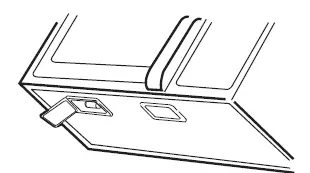
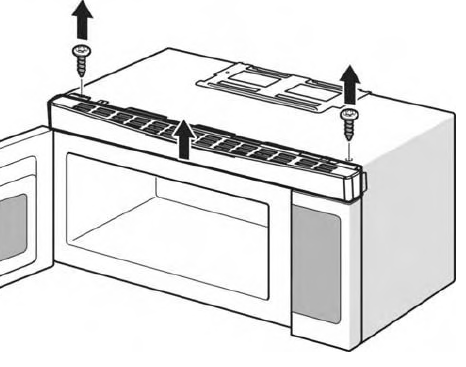
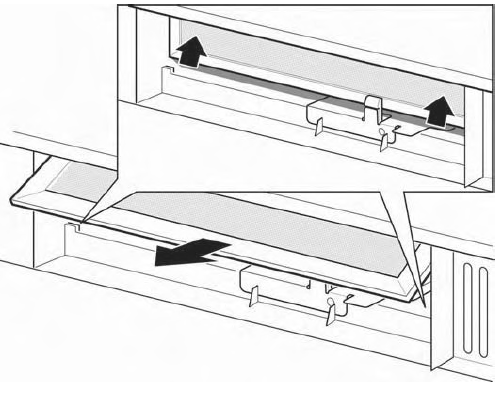
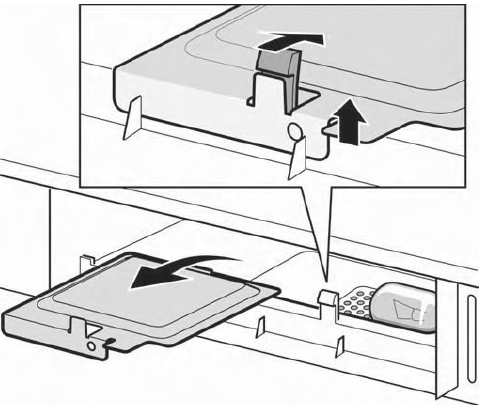
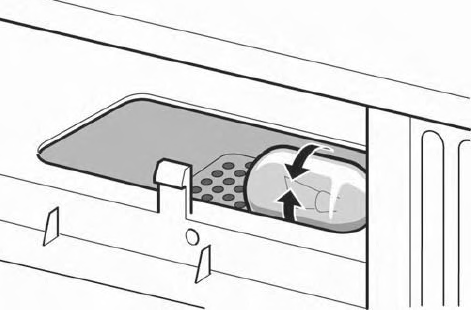 Note: DO NOT USE BULB LARGER THAN 30WATTS.
Note: DO NOT USE BULB LARGER THAN 30WATTS.